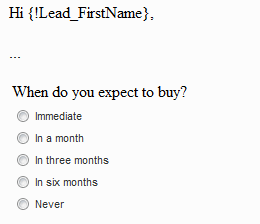As marketing automation is gaining ground and is being considered by small businesses in efforts to compete, this question presents a challenge that you may be facing at this moment. So how do you fare?
Here are some questions that will help you decide:
- Can you identify a target market, that you interact with currently or in the future, where the volume of interactions, by email, phone, or other channel, is more than your company can handle without automation?
- What is the likely outcome if you fail to interact (eg. follow up) with this audience?
- Are you losing sales to your competitors because they are using this technology and you are not?
Hopefully these questions will spur you to consider marketing automation as a possible solution for your business.
A General Approach:
Given that you are motivated, where do you start? I usually suggest these first steps to my clients and prospects.
1) Define strategy first
If the overall strategy relating to the area of need (marketing, sales, service/support, other…) has not been articulated, this should be done before anything else. This typically has the effect of forcing you to more clearly define where marketing automation should be addressed, and to prioritize these needs if there is more than one.
However, we need to be careful here. I do not wish to imply that this be a top-heavy exercise. Rather, it should be the opposite – I typically encourage people to take ‘baby steps’, and not try to solve the whole requirement in one fell swoop. I regard this as one of the most important aspects of this process, and I have seen more than one case where a (pure) top-down approach where everything has to be defined before the start (usually felt necessary by perfectionists) leads to failure.
So I would say ‘the light touch’ is important here.
2) Align implementation with strategy
Easier said than done!
It turns out that BizConnector makes this easier for you. Because BizConnector is rule-based – with rules defined by the client, it has a built-in advantage. And that is, that if you have articulated your strategy clearly, then there is a very good chance of having a one-to-one alignment between an expression of strategy and a rule.
ie. the (piece of) strategy can be expressed as a rule.
3) Other factors
In pursuit of the above, there are many things that need attention, not least of which is the design of content, feedback mechanisms, as well as training, effecting culture change, etc.
4) Test, and test again
This point cannot be over-emphasized. It’s too easy to fall on your face because the wrong messages were sent out to live people (at the wrong time).
5) Refine and expand
Basing the implementation on a non-top-down approach, it is easier for clients to increase their level of marketing automation sophistication with the confidence that arises from successful first steps.
I hope this gives you a good place to start.
I welcome inquiries from anyone who would like to know more.


